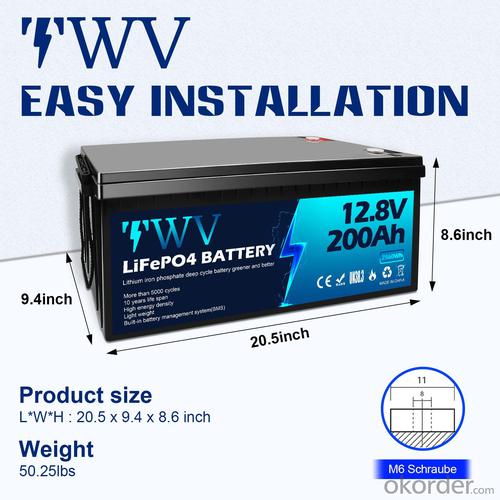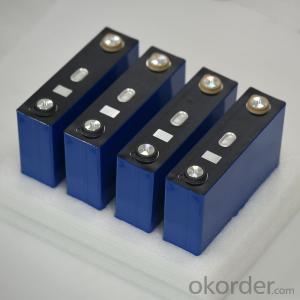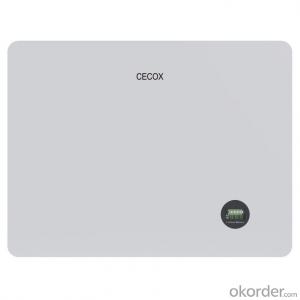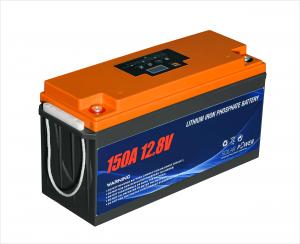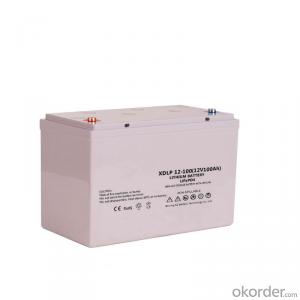12.8V 100Ah 200Ah 300Ah LifePO4 Lithium Iron Battery with Quantum Dot Solar Cells US and Europe Gel Replacement for Solar RV Marine
- Loading Port:
- SHENZHEN
- Payment Terms:
- TT OR LC
- Min Order Qty:
- 1 watt
- Supply Capability:
- 100000 watt/month
OKorder Service Pledge
Quality Product, Order Online Tracking, Timely Delivery
OKorder Financial Service
Credit Rating, Credit Services, Credit Purchasing
You Might Also Like
Specification
Max. Power(W):
15360W
Number of Cells(pieces):
4
Size:
523X240X215MM
| Product Code | LP-1205 | LP-1210 | LP-1215 | LP-1220 | LP-1225 | LP-1230 | LP-2410 | LP-2420 |
| Item | Specification | |||||||
| Nominal Voltage (customizable) | 12.8V | 12.8V | 12.8V | 12.8V | 12.8V | 12.8V | 25.6V | 25.6V |
| Rated Capacity (customizable) | 50Ah | 100Ah | 150Ah | 200Ah | 250Ah | 300Ah | 100Ah | 200Ah |
| Combination Mode | 4S1P | 4S1P | 4S | 4S2P | 4S2P | 4S2P | 8S1P | 8S1P |
| Ceiling Voltage | 14.6V ± 1V | 29.2V ± 1V | ||||||
| Minimum Voltage | 10V ± 1.0V | 20V ± 1.0V | ||||||
| Continuous Operating Current | ≤50A | ≤100A | ||||||
| Maximum Transient Current | ≤100A | ≤200A | ||||||
| Overcharge Protection Voltage | 3.65V ± 0.025V / Cell | |||||||
| Over Discharge Protection Voltage | 2.50V ± 0.025V / Cell | |||||||
| Charging Mode | Constant current and constant voltage (CC-CV) | |||||||
| Charging Current | ≤25A | ≤50A | ≤75A | ≤100A | ≤100A | ≤100A | ≤50A | ≤100A |
| Charging Temperature Range | 0~45℃ / 45~85%RH | |||||||
| Discharge Temperature Range | -20~55℃ / 45~85%RH | |||||||
| Shell (customizable) | Plastic shell | |||||||
| Plug (customizable) | M8 screw hole | |||||||
| Overall Dimension mm (customizable) | L194*W132*H172 | L325*W170*H215 | L330*W172*H220 | L523*W240*H215 | L523*W240*H215 | L523*W240*H215 | L523*W240*H215 | L521*W238*H218 |
| Weight | ≤6kg | ≤11kg | ≤14kg | ≤18kg | ≤18kg | ≤26kg | ≤18kg | ≤35kg |
| Signal Communication | - | Bluetooth | Bluetooth | Bluetooth | Bluetooth | Bluetooth | - | - |
| Scope Of Application | Caravan,UPS, Energy Storage,Marine,Golf Car,Buggies,Remote Monitoring,Switching applications and more | |||||||
| Certified | CE,UN38. 3. MSDS, shipping, hazardous package | |||||||
| Cell Certification | CE,UL,IEC 62109-1&-2, IEC 62477,EN61000,UN38.3 | |||||||
- Q: How much does a solar cell weigh?
- The weight of a solar cell typically varies depending on its size and type, but on average, a standard solar cell weighs around 3 to 4 pounds (1.4 to 1.8 kilograms).
- Q: Doping and Diffusion Principle in Solar Cell Processing
- Doping in semiconductors refers to the incorporation of phosphorus or gallium in semiconductor silicon to obtain n-type or p-type semiconductor materials, thereby fabricating a wide variety of semiconductor devices.
- Q: Are there any health risks associated with solar cells?
- There are no direct health risks associated with solar cells themselves. However, the manufacturing process of solar cells involves the use of certain chemicals and materials that can be harmful if not handled properly. Additionally, improper installation or maintenance of solar panels can pose electrical and fire hazards. Thus, it is important to ensure proper safety measures are followed during production, installation, and maintenance to minimize any potential health risks.
- Q: Can solar cells be used for powering submarines?
- No, solar cells cannot be used as the primary source of power for submarines due to their limited efficiency and inability to generate sufficient energy for the demanding requirements of underwater operations.
- Q: Can solar cells generate power at night?
- No, solar cells cannot generate power at night as they rely on sunlight to produce electricity.
- Q: Can solar cells be combined with energy storage systems?
- Yes, solar cells can be combined with energy storage systems. The integration of solar cells and energy storage systems allows for the capture and storage of excess energy generated by the solar cells during periods of high production. This stored energy can then be utilized during times when solar production is low or when there is a higher demand for electricity. This combination enables a more efficient and reliable renewable energy solution.
- Q: What is sun cells technology?
- Sun cells use high technology to change the sun's light energy into electrical energy. The sun cells can be used in the industries such as satellites, navigation lights, transistor radios and other power supply services.
- Q: How much electricity can a solar cell generate?
- The amount of electricity that a solar cell can generate depends on various factors such as the size of the cell, the efficiency of the cell, the intensity of sunlight, and the duration of exposure. Generally, a solar cell can produce anywhere from a few watts to several hundred watts of electricity.
- Q: What is the role of solar cells in powering water pumping systems?
- Solar cells play a crucial role in powering water pumping systems as they convert sunlight directly into electricity. This renewable energy source eliminates the need for traditional power sources and reduces the reliance on fossil fuels, making water pumping systems more environmentally friendly and sustainable. Additionally, solar cells provide a reliable and cost-effective solution, particularly in remote areas where access to electricity may be limited, ensuring that water can be pumped efficiently for various applications such as irrigation, agriculture, and domestic use.
- Q: How does a solar cell work?
- A solar cell works by converting sunlight into electricity through the photovoltaic effect. When sunlight hits the solar cell, it excites the electrons in the cell's semiconductor material, causing them to flow and create an electric current. This current can then be harnessed and used to power various devices or stored in batteries for later use.
Send your message to us
12.8V 100Ah 200Ah 300Ah LifePO4 Lithium Iron Battery with Quantum Dot Solar Cells US and Europe Gel Replacement for Solar RV Marine
- Loading Port:
- SHENZHEN
- Payment Terms:
- TT OR LC
- Min Order Qty:
- 1 watt
- Supply Capability:
- 100000 watt/month
OKorder Service Pledge
Quality Product, Order Online Tracking, Timely Delivery
OKorder Financial Service
Credit Rating, Credit Services, Credit Purchasing
Similar products
Hot products
Hot Searches
Related keywords






